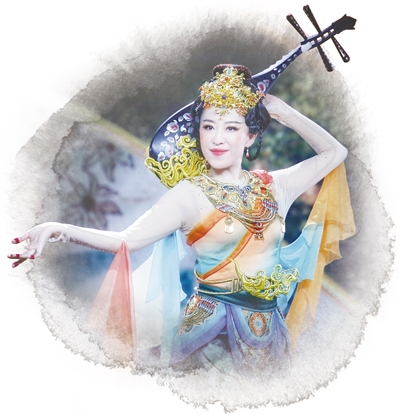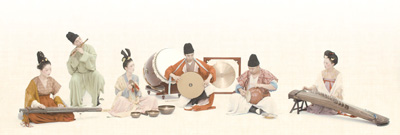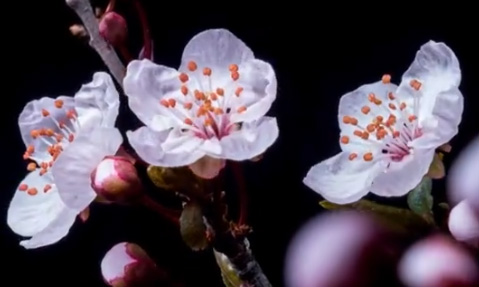China’s national music heritage reaches wider audience through creative performances combining unique innovations

Photo shows a stage view of the performance titled “Qi Tian Yue.” (Photo provided by the China National Traditional Orchestra)
Traditional Chinese music has gained an increasing number of younger followers in recent years by constantly embracing innovations, while often being introduced to audiences through creatively designed performances and shows, delivering an exceptional audiovisual experience to those in attendance.
On Feb. 15, 2022, an annual TV show by China Central Television was staged to celebrate the Lantern Festival, a traditional celebration held in China every year. The opening performance by a group of elite musicians from the China National Traditional Orchestra became the highlight of the show, showcasing the dazzling sounds produced by traditional musical instruments.
Titled “Qi Tian Yue,” the show combined 10 Chinese musicians playing the roles of 10 famous people from Chinese history, accompanied by images collected from folk tales in the backdrop, all while playing 10 different traditional musical instruments, such as the pipa (a four-stringed lute), erhu (a two-stringed fiddle), suona (a woodwind instrument), Chinese drums and the sheng (a reeded wind instrument).
“We creatively designed the show and presented it in a brand-new form,” introduced Zhao Cong, head of the China National Traditional Orchestra. “Each of the artists had a role to play in the show, such as one artist who portrayed Zhuge Liang, the ingenious ancient military adviser, while playing an ancient guqin, or seven-stringed zither, with another artist portraying Ruan Xian, a famous musician in ancient China, while playing the ruan, a plucked stringed instrument,” Zhao explained.

Photo shows a stage view of a show presented by the Zi De Guqin Studio. (Photo provided by the Zi De Guqin Studio)
The show also created an immersive experience for its audience through the application of extended reality (XR) technology, placing audiences within virtual vistas such as a starry sky, a landscape of mountains and rivers, and the Mogao Grottoes of Dunhuang.
In recent years, the China National Traditional Orchestra has continuously explored innovative transformations while further developing Chinese national music. While inheriting national music traditions, the orchestra has also pushed for innovations in national music in an all-round manner and through multiple channels, devoting itself to producing national music performances that can provide an excellent audiovisual experience for audiences.
In 2014, Zhu Liyue, a man who had a special fondness for the ancient musical instrument of the guqin, founded the Zi De Guqin Studio with the aim of popularizing traditional Chinese musical instruments. Nowadays, more and more young enthusiasts have joined the studio, having produced a series of musical works of their own over the years.
The guqin is one of the oldest plucked stringed musical instruments in China. However, there are only several dozen guqin compositions that people are familiar with.
To make the ancient musical instrument more readily accepted by audiences, the studio explored a way of producing and playing music by introducing other musical instruments into the music program while highlighting the role of the guqin. It also added percussion instruments to the musical compositions so that they could become more rhythmical and easier to memorize.
In 2019, members of the studio began filming short videos in which they wore traditional clothes and played various ancient musical instruments that appropriately complemented each other. They then published the videos online on social media platforms.
The first video was played more than 1 million times soon after it was released. So far, videos produced by the studio have altogether been played more than 100 million times, which is an indication of the success of the group in popularizing China’s national musical instruments.
Photos
Related Stories
- In China's Hainan, 86-yr-old artist gives modern makeover to traditional music
- The music and dance of Tang Dynasty
- Chaozhou music inherited by younger generation
- Music flash mob brings together Chinese and Finnish voices for the 2022 Winter Olympics
- NYC concert features Chinese cultural elements
- Music festival aims to promote cultural exchanges between China, ASEAN
- Ukrainian musician chases dream in northern Chinese village
- Outdoor Chinese music performance held in Dublin, Ireland
- Strawberry Music Festival kicks off on racetrack in NE China
- Concert called "Music among the Rubble" performed in Gaza City
Copyright © 2022 People's Daily Online. All Rights Reserved.










